April 27th
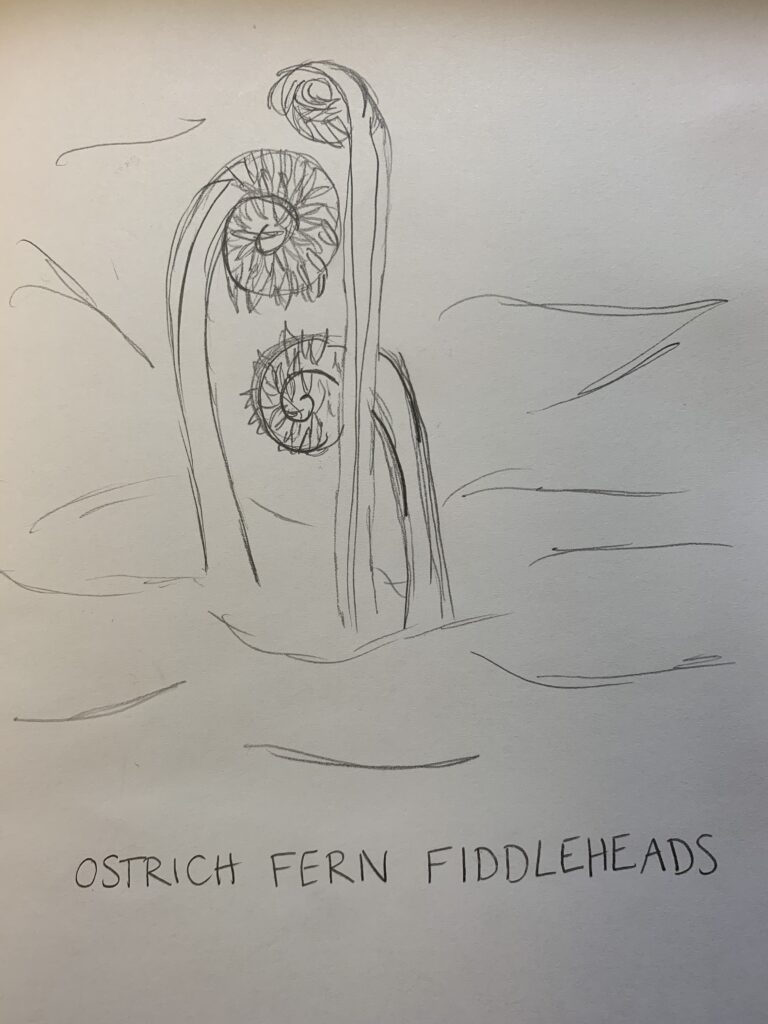
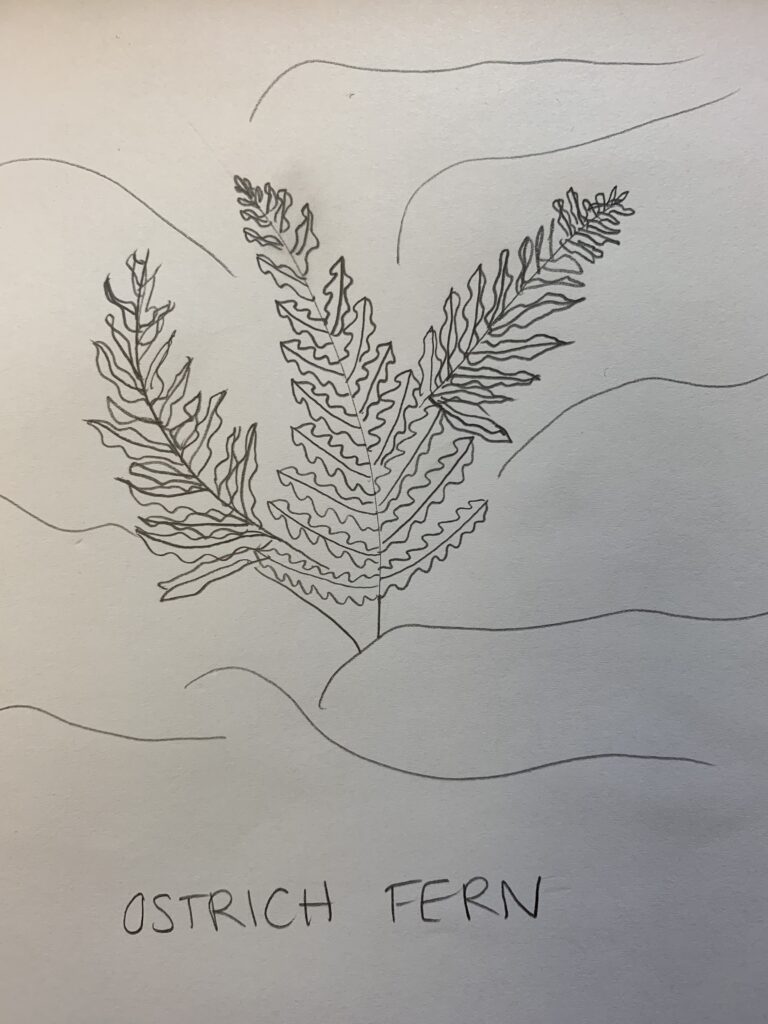
My April visit to my phenology spot was filled with spring sightings! The first thing that I noticed upon entering the forest was that ferns are beginning to pop up around the ground! I spotted several clusters of fiddleheads, which I’m pretty sure were mostly ostrich ferns. See the above sketch of one of these clusters, and right below it, what these fiddleheads will eventually look like once it gets a little bit warmer and as they continue to grow! Many people harvest ostrich fern fiddleheads to cook with! Yum… they made me crave a fiddlehead dish! I also found some evidence of a woodpecker- maybe a pileated woodpecker. Photo one below shows the pretty large holes that this bird carved into a birch tree to snack on some bugs inside. Although I didn’t see any woodpeckers in person, I saw quite a few other birds, including many chickadees, some robins, and even a red-tailed hawk, which I wish I could have gotten a picture of, but I was too lost-in-the-moment and it was too fast! Also, I spotted a bright orange newt who was crawling on a fungus that was growing on a dead tree. It was probably trying to make its way to a vernal pool where it will transform into a green salamander for the summer. I saw some other fungi growing on a dead tree (see photo two below) that grabbed my attention- always looking for some cool fungi! I didn’t see many different types of wildflowers, but the two that I did see were pretty and added some pops of color to the forest. The first flowers I saw were right outside the entrance to Centennial Woods- purplish blue flowers poking out of the green grass (photo three). I identified these as Siberian Squill on iNaturalist. Deeper into the woods, I found some white and yellow flowers poking up out of a muddy patch. These were identified as Dutchman’s Breeches (photo four). It made me happy to see these signs of spring! Although I didn’t see any flowering trees, there were many green buds and new growth on branches. Beeches, birches, and maples all had new buds growing. In photo six, the new green growth from this year can be clearly seen. At first I thought the woody plant pictured in photo seven was honeysuckle, but upon exploring other observations in iNaturalist, I think it is actually Eastern Leatherwood. It had fuzzy, clustered, light green leaves. I decided to explore my site a little bit more by flipping up some rocks and seeing if there were any creatures hiding underneath. Under one, there were a few pill woodlice and some tiny eggs, pictured by the last photos below. I flipped over several more rocks closer to/ in the stream, hoping to find some interesting invertebrates, but I was unsuccessful.
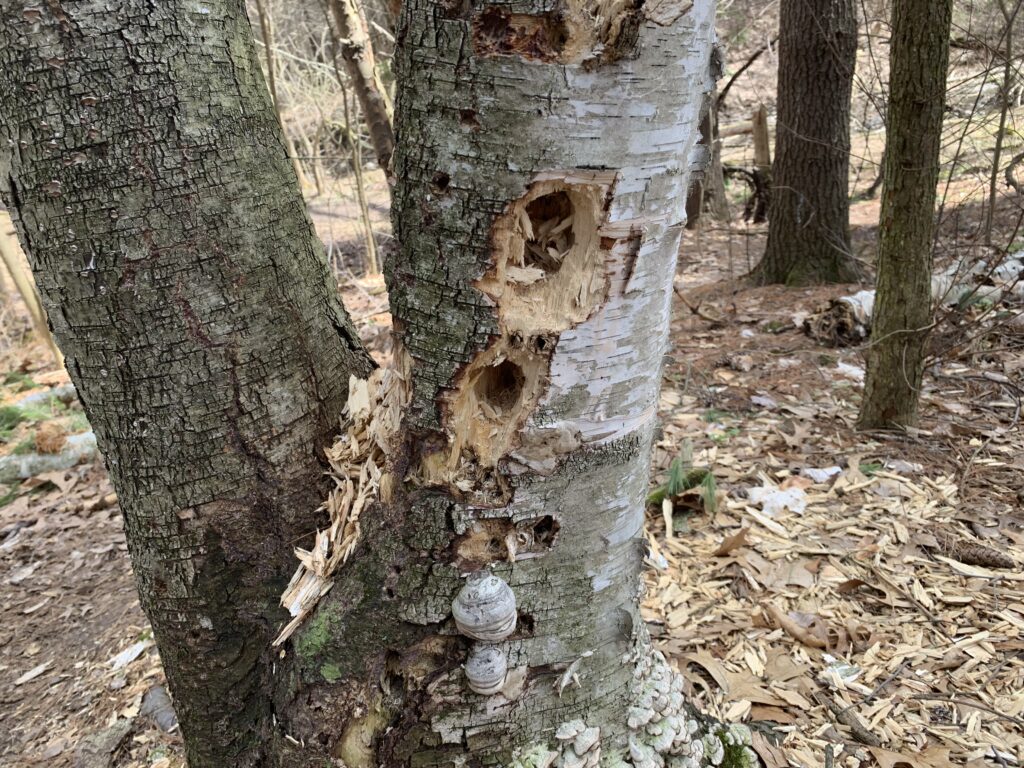

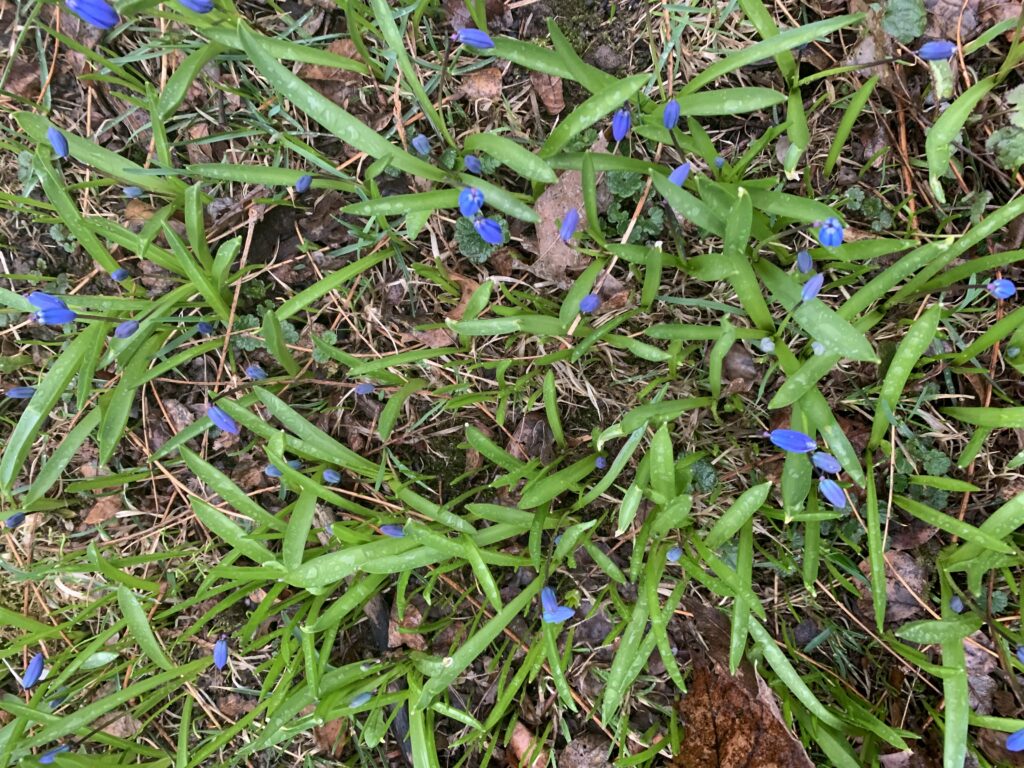
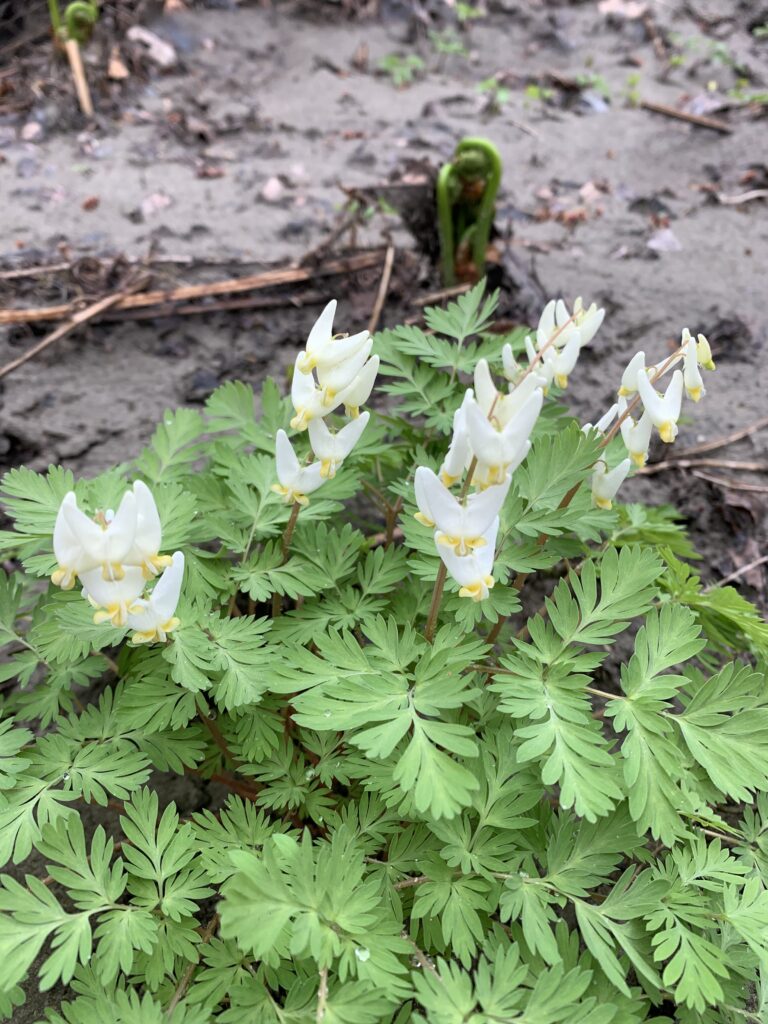
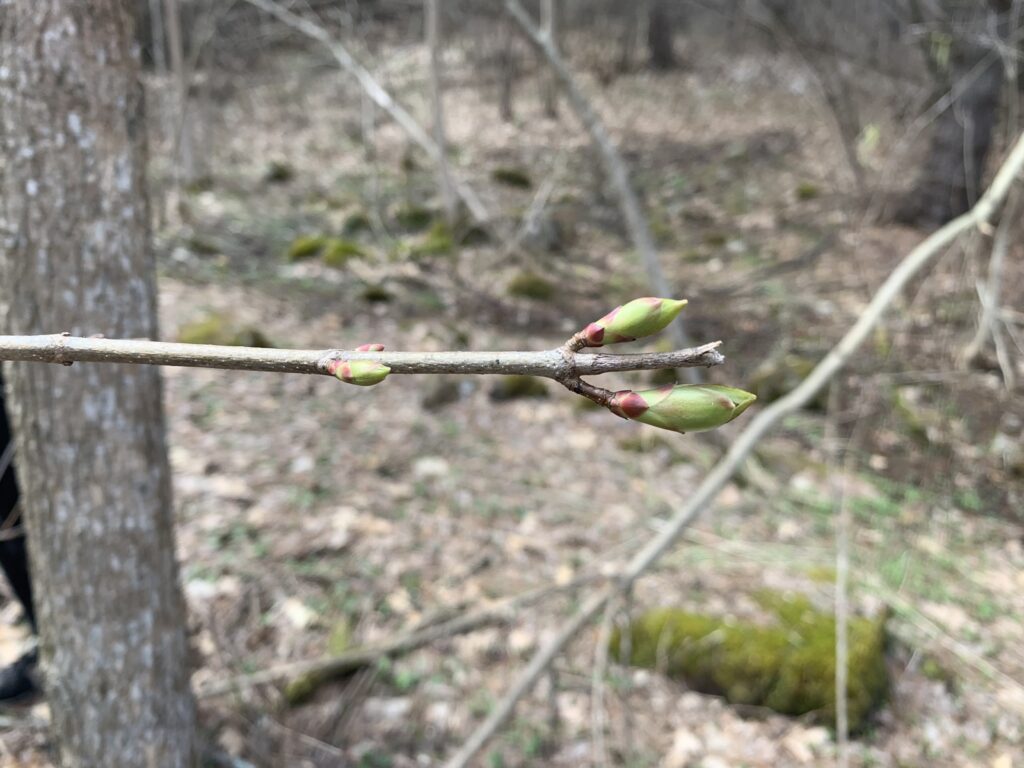
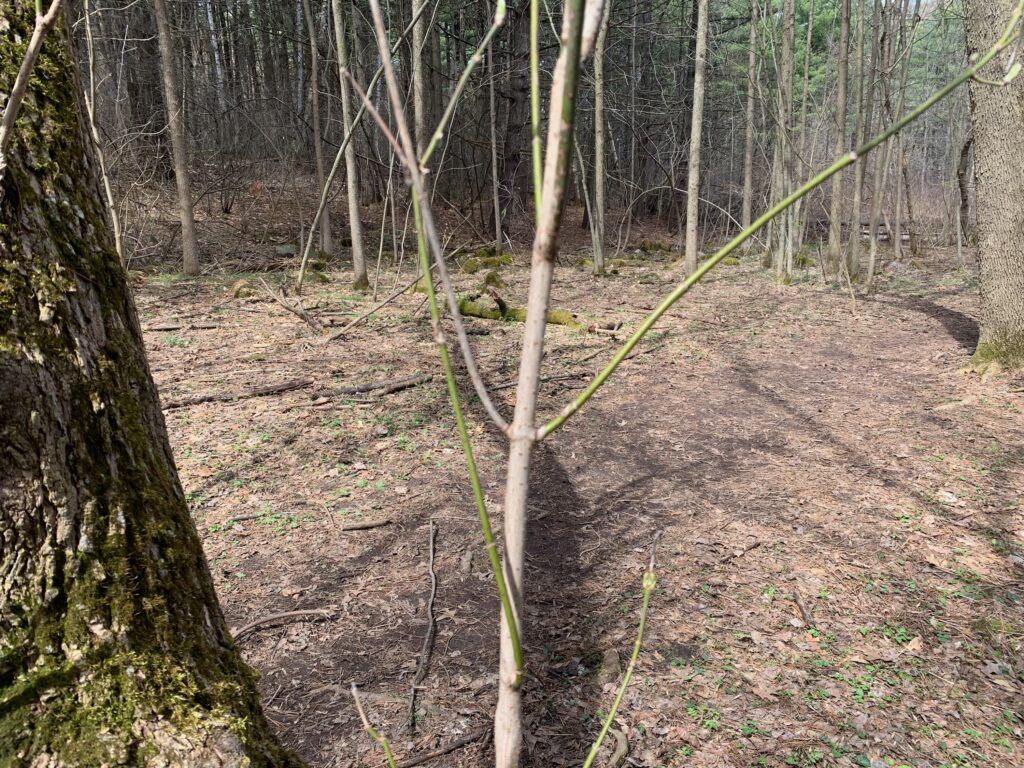

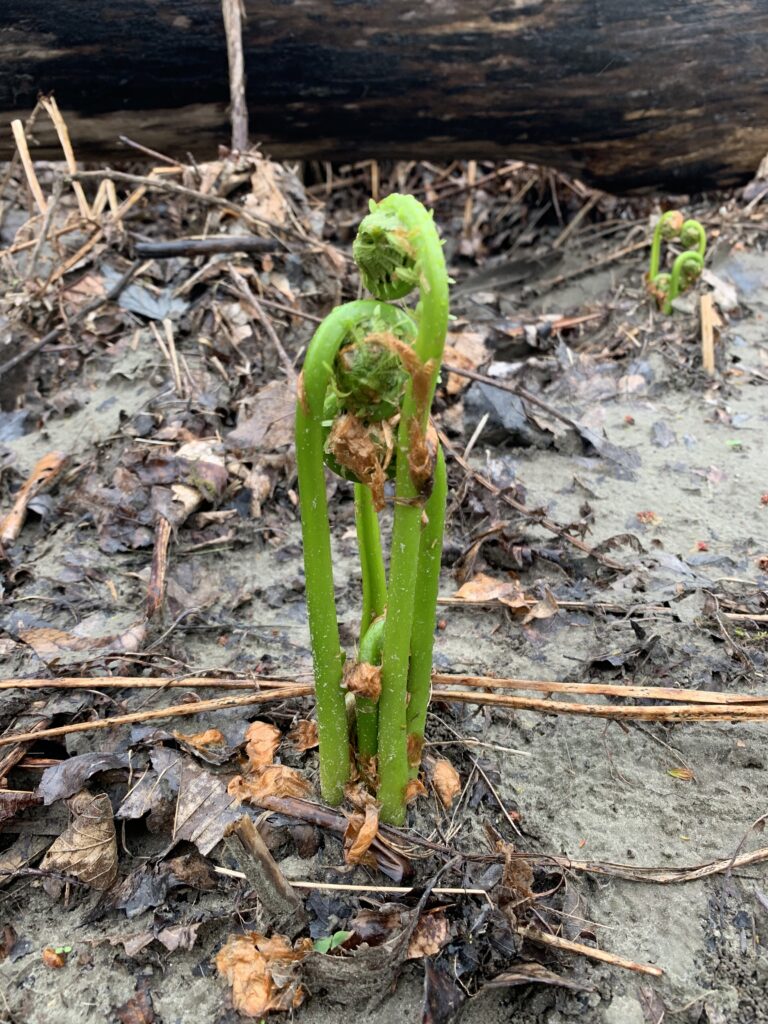
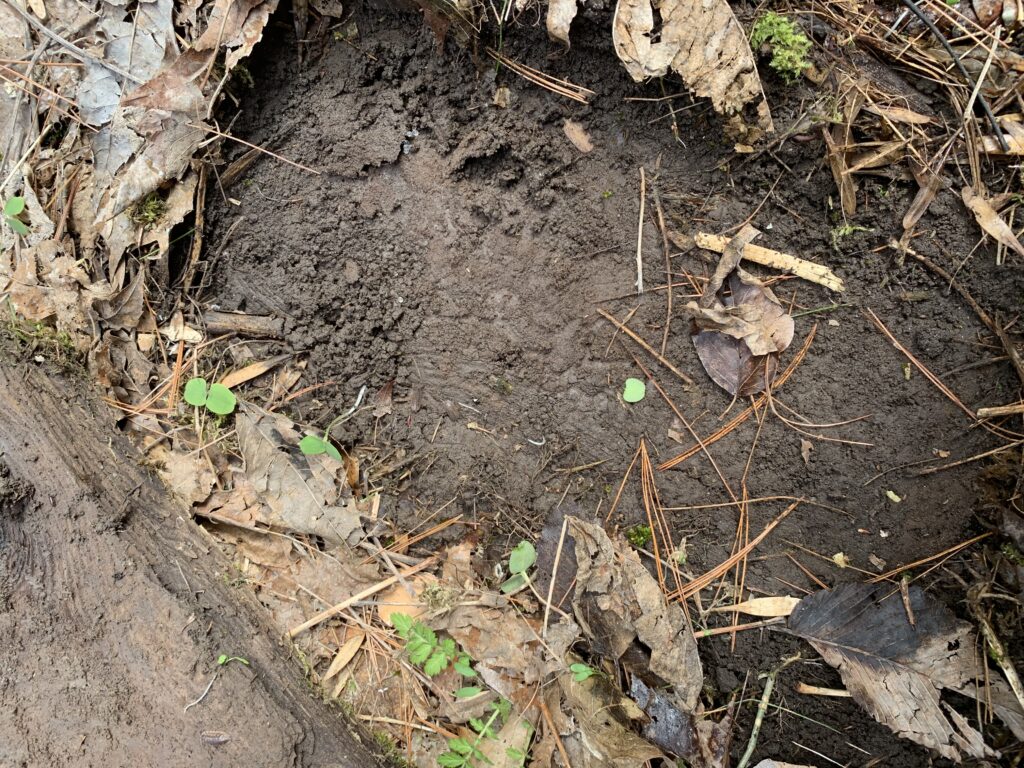
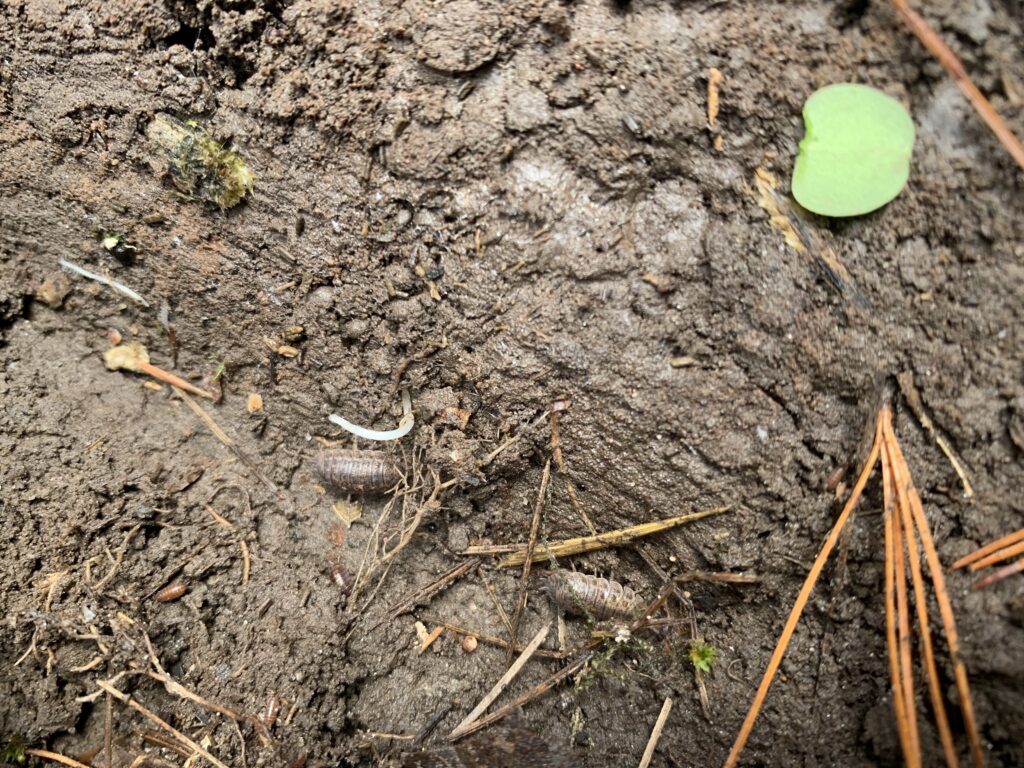



Recent Comments